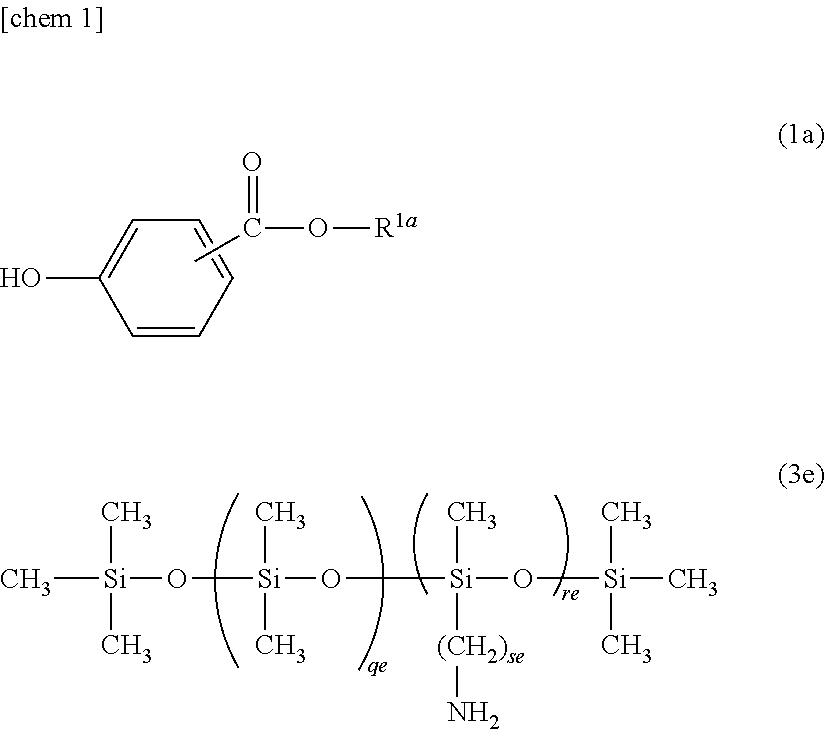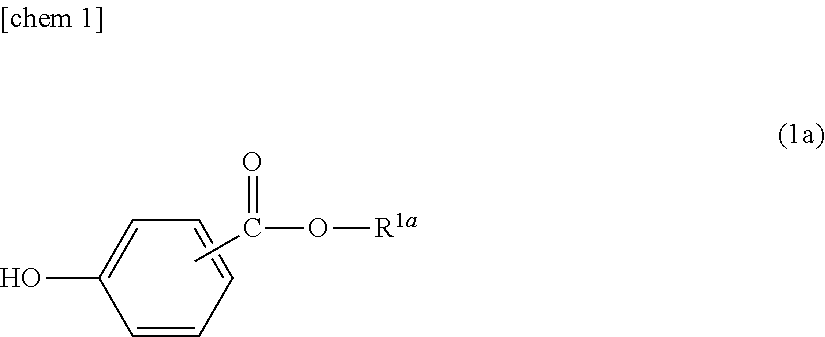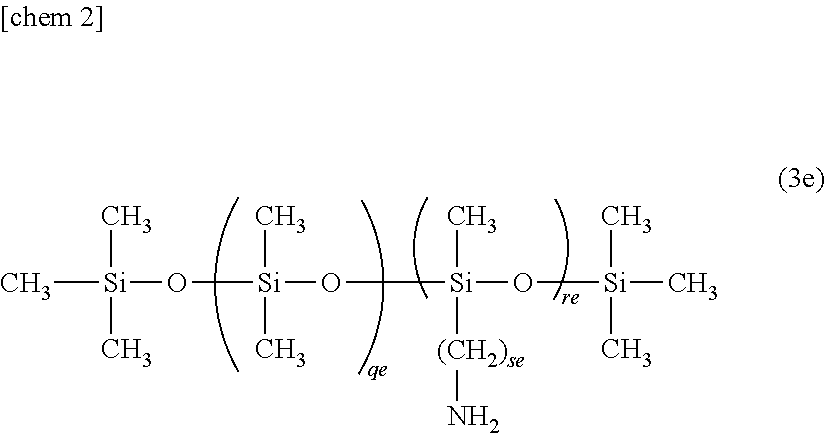Oil agent for carbon-fiber-precursor acrylic fiber, oil agent composition for carbon-fiber-precursor acrylic fiber, oil-treatment-liquid for carbon-fiber-precursor acrylic fiber, and carbon-fiber-precursor acrylic fiber bundle
- Summary
- Abstract
- Description
- Claims
- Application Information
AI Technical Summary
Benefits of technology
Problems solved by technology
Method used
Image
Examples
example 1
[0362]Hydroxybenzoate (A-1), amino-modified silicone (H-9), cyclohexanedicarboxylate (C-2) and antistatic agent (M-2) were mixed, to which nonionic surfactant (K-4) was further added and stirred well to prepare an oil agent composition.
[0363]While the oil agent composition was being stirred, deionized water was added to set the concentration of the oil agent composition at 30 mass %. Then, the mixture was emulsified by a homo-mixer. The average particle size of the micelles at that time was measured by a laser diffraction / scattering particle-size distribution analyzer (product name: LA-910, made by Horiba Ltd.) and found to be approximately 3.0 μm.
[0364]Next, using a high-pressure homogenizer, the oil agent composition was dispersed until the average particle size of the micelles became 0.2 μm, and an aqueous emulsion of the oil agent composition was obtained. The aqueous emulsion was further diluted with deionized water to prepare an oil-treatment-liquid with an oil agent compositi...
reference example 23
Examples 2˜22, Reference Example 23
[0374]Oil agent compositions and oil-treatment-liquids were prepared the same as in Example 1 except that the types and amounts of components in each oil agent composition were changed as shown in Tables 1, 2 and 3. Then, carbon-fiber-precursor acrylic fiber bundles and carbon-fiber bundles were produced respectively. Measurements and evaluations were conducted in each example. The results are shown in Tables 1, 2 and 3.
PUM
| Property | Measurement | Unit |
|---|---|---|
| Temperature | aaaaa | aaaaa |
| Temperature | aaaaa | aaaaa |
| Temperature | aaaaa | aaaaa |
Abstract
Description
Claims
Application Information
 Login to View More
Login to View More - R&D
- Intellectual Property
- Life Sciences
- Materials
- Tech Scout
- Unparalleled Data Quality
- Higher Quality Content
- 60% Fewer Hallucinations
Browse by: Latest US Patents, China's latest patents, Technical Efficacy Thesaurus, Application Domain, Technology Topic, Popular Technical Reports.
© 2025 PatSnap. All rights reserved.Legal|Privacy policy|Modern Slavery Act Transparency Statement|Sitemap|About US| Contact US: help@patsnap.com



